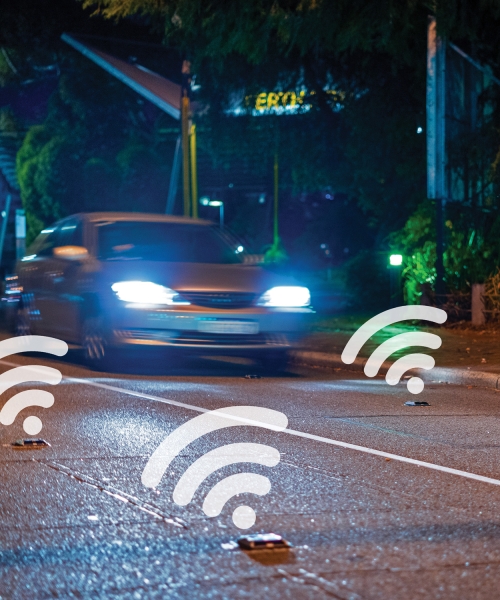The 4-Class System categorises vehicles into:
1. Light vehicles (including cars, vans, and small utility vehicles)
2. Medium commercial vehicles (2-axle trucks and buses)
3. Heavy commercial vehicles (rigid trucks with 3 or more axles)
4. Articulated vehicles (semi-trailers and road trains)
All of which can be monitored using the RoadPod VT and RoadPod VP systems.

This simplified approach offers significant advantages for traffic monitoring and planning. The reduced number of categories streamlines data collection and processing, while also lowering implementation and maintenance costs for classification equipment. The system provides sufficient detail for many standard traffic management applications while maintaining operational simplicity, making it particularly effective for basic traffic studies and routine monitoring.
However, the 4-class system has notable limitations. Its simplified nature can make it challenging to conduct specialised analyses that require more granular data. In complex traffic environments, the system may oversimplify the vehicle mix, potentially missing important nuances in traffic patterns. Additionally, converting data to match other classification systems can prove challenging due to the broad categorisation approach.
The FHWA 13-Class System: Detailed Classification
The FHWA's 13-class system provides a more comprehensive breakdown of vehicle types, from motorcycles to multi-trailer trucks. The system breaks down vehicles into specific categories, including:
- Classes 1-3: Motorcycles, passenger cars, and other two-axle four-tire vehicles
- Classes 4-7: Buses and single-unit trucks with varying axle configurations
- Classes 8-13: Various combinations of multi-unit trucks

This detailed classification enables enhanced accuracy in traffic impact studies and provides a better understanding of road wear patterns. The system proves particularly valuable for pavement design and maintenance planning, while also supporting detailed vehicle mix analysis for safety studies and specialised infrastructure planning.
However, the increased detail comes with its own set of challenges. The method requires more sophisticated data collection and processing methods, leading to higher equipment costs and more extensive training requirements for personnel. The complexity of the system can also increase the likelihood of classification errors and complicate data analysis and reporting processes.
Advanced Vehicle Classification Schemes
Beyond the standard frameworks, several specialised classification methods have emerged to meet modern traffic monitoring needs. The VRX scheme, an extension of the AustRoads standard, incorporates vulnerable road users into its classification framework. By adding dedicated categories for bicycles and motorcycles, this enhanced scheme provides vital data for urban mobility planning and safety initiatives. This comprehensive approach is exclusively available through MetroCount products.
For shared pathway monitoring, specialised classification methods identify distinct bicycle types and pedestrian movements. This classification distinguishes between four bicycle categories - short, regular, medium, and long/cargo bikes - alongside pedestrian traffic. This granular data proves invaluable for infrastructure planning in urban areas with increasing active transport adoption.
Equipment and Implementation
Traffic monitoring technologies align with different classification schemes based on their capabilities and design. Tube systems and piezoelectric sensors excel at capturing the detailed vehicle characteristics needed for 13-class categorisation. These systems can distinguish subtle differences between various truck configurations and axle spacings required for FHWA classifications.
The RoadPod VM series, working with inductive loops, specialises in 4-class classification. While focused on fewer categories, these systems deliver exceptional reliability and accuracy. This technology’s sophisticated algorithms process loop signatures to achieve consistent vehicle categorisation across various weather conditions and traffic scenarios. The RoadPod VM proves particularly effective for permanent installations where long-term reliability is crucial.

Choosing the Right Approach
The choice between 4-class and 13-class systems depends on specific needs:
- Traffic monitoring requirements
- Available budget and resources
- Required level of detail for planning
- Local regulations and standards
- Integration with existing systems
The 4-class system provides a cost-effective solution for basic tolling and traffic monitoring, while the 13-class system offers the detailed data needed for comprehensive urban planning and sophisticated traffic management.
Success lies not in choosing the more complex system but in selecting the classification approach that best matches operational requirements, available resources, and long-term objectives. Understanding these distinctions enables planners to make informed decisions that effectively serve their communities.
Contact us to learn more about our traffic monitoring solutions.
Got a great MetroCount story? Share it with us and let the world know the great work you're doing in your community.
